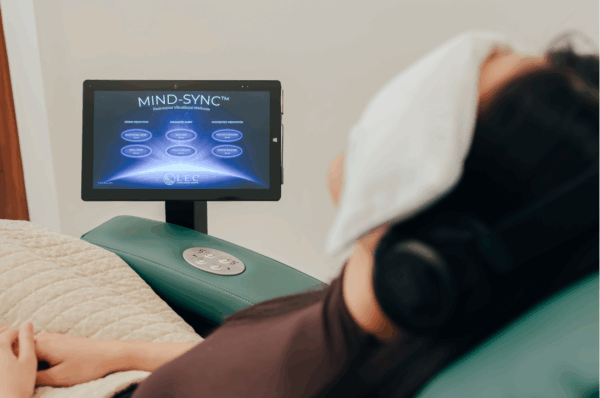The world of wellness is booming. Check any online statistic or ask your preferred LLM and you’ll see it’s all up and to the right with billions of dollars of annual growth. This is something that we all know and can feel in a general sense, but then extrapolating this megatrend into hotel experiences that are approachable, affordable, scalable and profitable is a whole other matter.
That’s why it’s a breath of purified air to hear from those hoteliers who live wellness every day and command teams to evolve the amenities at numerous properties with different guest types and organizational structures. This gives them a sagacious, worldly perspective on what actually works and what’s at the forefront of wellness design. As the Head of Global Spa, Fitness and Wellness for Marriott International, Suzanne Holbrook is one such individual, with multiple decades of corporate spa experience for Ritz-Carlton before taking the helm brand-wide at the beginning of 2025.
Our time together was spurred by the latest unveiling of wellness technology (“welltech”) across numerous luxury and upper-upscale properties in North America. These technologies encompass the gamut of all the emerging areas that are backed up by scientific research including, but not limited to, red light therapy (RLT), the more encompassing category of photobiomodulation (PBM), other types of frequency technologies (“freqtech”) like vibroacoustics or soundwaves, contrast bathing (namely, cold plunges or cryotherapy), medi-spa techniques, robo-massages, AI-powered facial therapies, VR meditation and lymphatic drainage.
Altogether, what we’re seeing is a convergence towards multisensorial (activating multiple senses) and multimodal (activating multiple biochemical restoration pathways) experiences that bundle together a variety of these practices and welltech into a single guest itinerary for a half-day or full-day experience. For the hotel, these bundles translate into greater overall spa utilization and ancillary revenue per guest.
Advertisements

But take one more look at that shorthand list of available welltech above and you’ll quickly realize that the tasks of selecting the right equipment and then commercializing these experiences represents an enormous amount of work. Therein, hotel organizations need strong leadership to rollout these experiences in a cohesive manner. Let’s hear what Holbrook has to say on that front!

Let’s start small by highlighting one property that you’re especially proud of with its deployment of wellness technologies. What services and treatments were added?
The Ritz-Carlton Spa, Amelia Island is a property I’m especially proud of! Offering a new level of wellness, some examples of how they are leaders in this space include:
- The TheraLight 360: Uses full-body red and near-infrared light therapy to reduce inflammation, boost energy, improve skin tone and promote deep healing, all in a relaxing, 20-minute session.
- LPG Endermologie: For those looking to contour their body naturally, this uses a gentle, mechanized massage to reduce cellulite, tone the skin and stimulate lymphatic drainage.
- Mind Sync Mediation Zero Gravity Chair: A multisensory escape that combines binaural beats, vibroacoustic therapy, chromotherapy and zero-gravity positioning to calm the nervous system and clear the mind.
We selected these services through team collaboration, focusing on treatments that deliver real recovery benefits and elevate the guest experience with meaningful, restorative care. Together, these treatments deliver powerful physical and mental benefits, whether used alone or as part of a customized wellness program.
Spa and wellness is still viewed by many traditionalists as massage, body treatments, facials, mani-pedis, thermal and salon services. How are you changing perceptions?
Marriott is helping lead this shift by integrating multimodal wellness experiences such as touchless therapies, contrast treatments and frequency-based technologies, activating underutilized areas within our hotels with wellness hubs featuring red light therapy pods, vibroacoustic tables, automated massage beds and chairs to meet evolving guest expectations. The market data supports this evolution.
The global spa industry is projected to grow from $95 billion in 2021 to over $185 billion by 2030. In the U.S., massage therapy still accounts for 70% of spa visits, but demand for advanced skincare, fitness and tech-enabled treatments is rising. This shift reflects a broader consumer interest in health, recovery, and personalized wellness, moving beyond pampering to purposeful, results-driven experiences.
How do these wellness technologies differ amongst luxury, upper-upscale and other categories along the chain scale? What do you forecast to be the most productive applications for midscale and economy hotels?
In luxury hotels, wellness tech is immersive and personalized with ready applications for areas like red light therapy, vibroacoustic beds and biometric diagnostics. These experiences are deeply integrated into the brand and guest journey. For midscale and economy hotels, the focus is on scalable solutions like touchless recovery pods, guided meditation chairs, and in-room wellness kits. The most productive applications through all of these segments are those that deliver restorative value, making wellness accessible and impactful across all brands.
On the staff side, learning the science and how to properly use the equipment can also be equally daunting. What processes have you put in place to ensure a smooth and scalable rollout for operations?
We recognize that welltech can be daunting for teams unfamiliar with science. To ensure a smooth rollout, we’ve implemented structured, scalable training programs across our brands. By partnering with our vendor partners, combining structured education, brand-specific playbooks and intuitive tech design, we empower our teams to deliver wellness experiences that are both customized and operationally seamless.

What have you observed to be the most effective ways to package welltech treatments? Can you provide a single property example?
We’ve seen the greatest success when welltech spa treatments are bundled together with overnight hotel stays, allowing guests to experience next-generation wellness as a primary part of their time on property, not just an add-on. This approach creates a more immersive and intentional experience, where innovative therapies are woven into the rhythm of rest, relaxation and recovery. Whether it’s a dedicated sleep package or a recovery-focused retreat, the integration of cutting-edge spa treatments into a larger hospitality offering helps guests engage more deeply with the benefits of welltech.
A great example of this is the JW Marriott Parq Vancouver, and its Serene Escape Package. This overnight offering includes a complimentary 25-minute Mind-Sync Harmonic Sleep Lounger session per night – the multisensory experience mentioned earlier with its curated soundscapes and vibrational frequencies. The treatment is seamlessly woven into the guest stay, offering a high-tech yet deeply restorative ritual that reflects the growing demand for sleep optimization and tech-enabled self-care.
Welltech can also be expensive. How do you price and merchandise these experiences so that they have a worthwhile ROI?
Welltech is proving to be a scalable investment for both guest experience and business performance. Touchless treatments and smart recovery zones are boosting spa utilization and unlocking new revenue streams, while also reducing staffing needs and repurposing underused spaces.
I would add that touchless wellness is an extension of, not a replacement for, human touch, allowing us to meet a broader range of guest preferences. We believe more data is forthcoming, but early feedback shows that offering both traditional and tech-forward wellness options adds meaningful value to the guest experience.
What’s your overall approach to integrating photobiomodulation (PBM)?
We regularly attend wellness-focused events to stay ahead of emerging trends, connect with forward-thinking wellness leaders and explore the latest in tech-driven treatments. These gatherings also allow us to meet directly with PBM equipment vendors and conduct a thorough vetting process, assuring that any wellness solution we consider aligns with Marriott’s standards for innovation, guest experience and operational excellence.
Just as we started with a single property, let’s also end that way. Can you describe a property under your purview that has truly future-proofed its wellness offerings by deploying next-gen welltech services?
One other property that has future-proofed its wellness offerings is The St. Regis Longboat Key Resort, which offers a sophisticated and immersive approach through its Multistep Hydrothermal Wellness Circuit Journey. This carefully designed sequence combines advanced cold and hot therapies in a transformative spa experience that delivers profound benefits for both body and mind.
The journey begins with a warm rinse and full drying, which optimizes the skin’s ability to sweat and prepares guests for the thermal circuit. Following this, guests spend time in either the steam room or sauna, leveraging heat therapy to promote pain relief, stress reduction, increased circulation and respiratory benefits. Next, guests enter a refreshing cold phase with options tailored to guest preference: a cool mist shower, a cold plunge or the signature Snow Shower, where gentle snowflakes fall over the body. This contrast therapy enhances circulation and accelerates recovery. Guests then relax and hydrate during a recovery period before choosing to repeat the cycle or proceed to a warm soak in the Vitality Waters hydrotherapy pool. The soak combines foot bubblers, wall jets for the lower legs and foot jets in a session that supports cardiovascular health, pain relief, stress reduction and improved sleep quality.